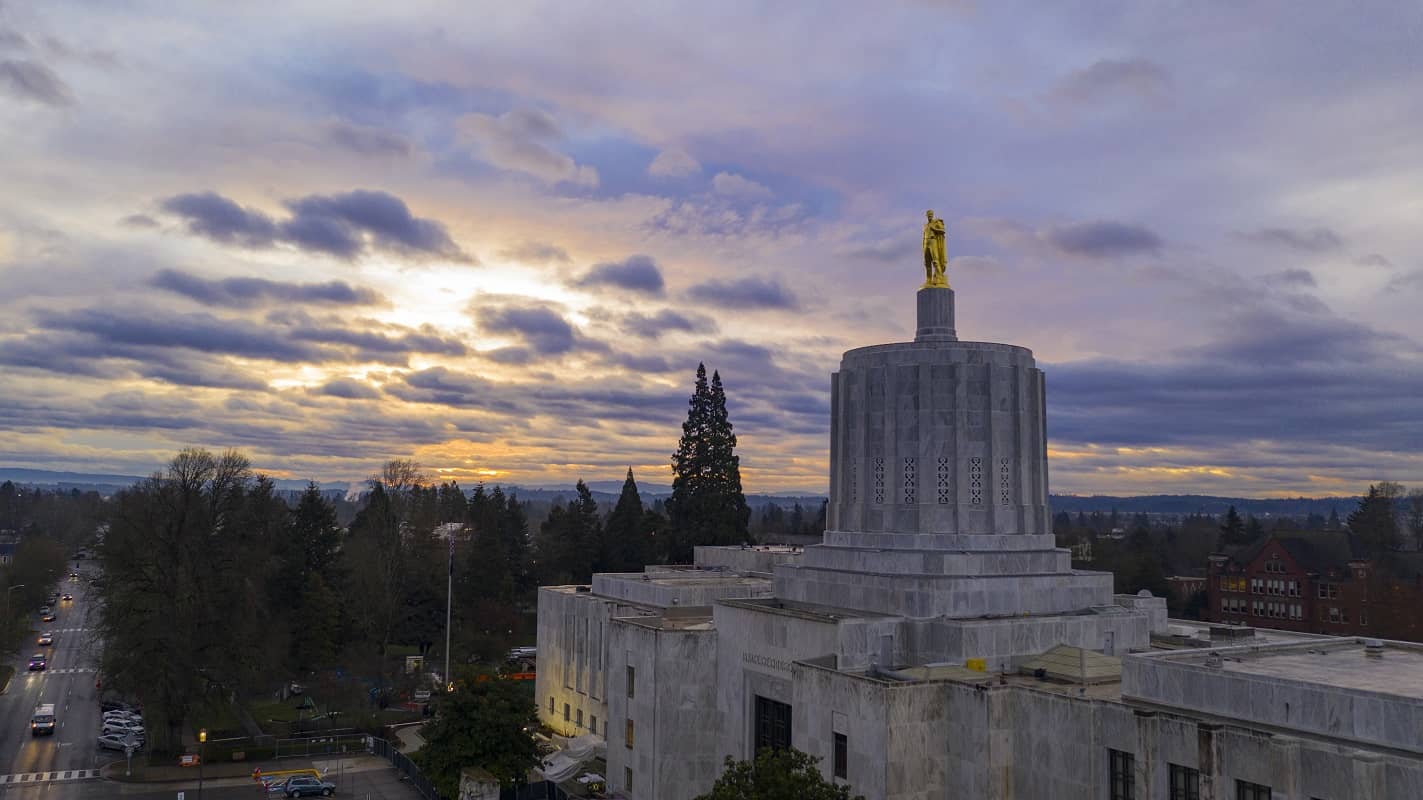By Shirley Iverson and John A. Charles, Jr.
Summary
Over the past decade, Oregon has had some of the highest participation rates for federal food aid in the nation. The reason is that state agencies and “anti-hunger” advocates have aggressively recruited people into the food assistance program, a callous approach to government aid that fosters a lifestyle of government dependence among those most in need of self-reliance skills.
Word count: 942
![]() Click here to read this Commentary in PDF format
Click here to read this Commentary in PDF format
A record number of people in Oregon have entered the food assistance program during 2008. It is tempting to attribute this to poor economic conditions, but that would be wrong. Over the past decade, Oregon consistently has had some of the highest participation rates for federal food aid of any state in the nation, even in years when the economy was booming. The reason is that state agencies and “anti-hunger” advocates have aggressively recruited people into the program. Advocates view federal aid as “free money,” and believe that even more people should sign up as a way of supporting the local economy.
This approach callously promotes a lifestyle of government dependence among those most in need of self-reliance skills, while destroying wealth in the national economy. It’s time for a new strategy.
The Federal Program
The Supplemental Nutrition Assistance Program (SNAP), formerly known as Food Stamps, is administered at the national level by the U.S. Department of Agriculture (USDA) and in Oregon by the Department of Human Services (DHS). The program began experimentally in 1939 as a pilot project to help dispose of surplus crops, but the permanent program we know today was inaugurated by Congress in 1964. The program is targeted to low-income and single-parent households, and benefits are distributed via electronic debit cards (known locally as the Oregon Trail card).
The SNAP program is intended to supplement the food budgets of low-income families. SNAP benefits are paid for 100% by federal tax dollars, even though DHS actually runs the Oregon program.
During the 1990s, Oregon began an aggressive Food Stamp recruitment campaign. As a result, by 2001 Oregon had the third-highest participation rate (or take-up rate) of any state in the nation. The participation rate measures the number of people signed up as a percent of all those who are eligible for the program.
Oregon had the highest take-up rate of any state in the nation in 2002, and is consistently in the top five. This is in stark contrast to our neighboring states. In 2006, for example, California had the lowest take-up rate in the nation, at 50%. Washington, Idaho, Montana, Nevada and Wyoming were all in the bottom 15. Meanwhile, the national participation rate was 67% and Oregon was tied for fifth at 85%.
SNAP advocates are proud of this trend. They claim that every $5 in federal food aid money generates $9.20 in “total community spending.” The website of the Oregon Hunger Relief Task Force states, “Increased participation means that Oregon now brings in more than $450 million in federal food stamp dollars annually. If all eligible households participated, Oregon could bring in almost $100 million more each year.”
The message from advocates is clear: It is the patriotic duty of every low-income family to sign up for those free federal dollars, no matter how humiliating it is to actually use them.
The federal government has been fully complicit in this dysfunctional recruitment. The USDA has a public “goal” of increasing the national take-up rate to 68% by 2010, and has awarded activist states like Oregon special grants as rewards for their outreach. In 2007 the Oregon DHS received a “bonus” of $1.7 million, which was used to finance additional recruitment and nutritional education. In September 2008 USDA gave Oregon another $1.5 million.
The federal government also recently gave $1 million to 14 faith-based and community organizations to improve access to the Food Stamp program. Catholic Charities of Portland was one of the 14.
Taxpayer-financed advocacy leads to high participation rates, which results in even more tax subsidies to Oregon through increased monthly SNAP benefits — a perpetual motion machine powered by federal dollars. The trend itself has almost nothing to do with actual levels of deprivation; it’s all about marketing.
The sad part is that SNAP is not designed to encourage self-sufficiency or saving. In fact, prudent household shopping is explicitly discouraged. If SNAP recipients are thrifty and spend less per month than they are allocated, their benefits will be cut back. Therefore, the bureaucratic imperative is to “spend it all now,” exactly the opposite of what we usually encourage people to do when they are on limited income.
We need much more creativity in addressing food insecurity. Instead of just giving a hand-out, we should give a “hand up” by addressing root causes of hunger. For instance, according to the Oregon Food Bank, only 36% of their clients have post-high school education, compared with 59% of the general population. Clearly a good education is critical to future earnings, yet Oregon refuses to offer a money-back guarantee to students trapped in low-performing public schools.
Offering educational vouchers (modeled on the Food Stamp program) would positively affect poor children for the rest of their lives, and save taxpayers money in the long run by reducing future reliance on public assistance.
We also could help the 29% of Oregon Food Bank clients who are actively looking for work but do not have a car. Research shows that car ownership increases the likelihood of steady employment and leads to higher household income, yet Oregon policymakers insist on squandering hundreds of millions of tax dollars annually on high-cost rail transit, which caters to high-income riders who already have jobs and own cars. Diverting just a small fraction of transit money (one percent or less) into a low-income car loan program would be a cost-effective way of lowering unemployment rates, thus reducing food insecurity.
Being “Number 1 for Food Stamps” is nothing to be proud of. Our goal should be to join California at the bottom of the heap, by actually helping people to become self-reliant.
Attention editors and producers:
Cascade Commentaries are provided for reprint in newspapers and other publications, with credit given to author(s) and Cascade. Contact Cascade to arrange print or broadcast interviews on this commentary topic.
Electronic text files are available online at www.cascadepolicy.org.
Please contact:
Nancy Wheaton
Cascade Policy Institute
4850 SW Scholls Ferry Rd.
Suite 103
Portland, Oregon 97225
Phone: (503) 242-0900
Fax: (503) 242-3822
www.cascadepolicy.org
info@cascadepolicy.org
Cascade Policy Institute is a tax-exempt educational organization as defined under IRS code 501(c)(3). Nothing appearing in this Cascade Commentary is to be construed as necessarily representing the views of Cascade or its donors, or as an attempt to aid or hinder the passage of any bill before any legislative body. The views expressed herein are the author’s own.











